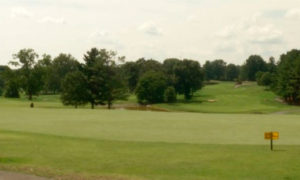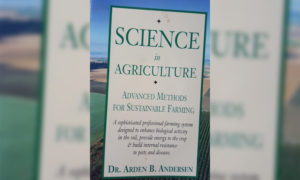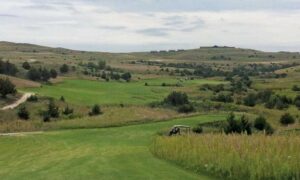February 11, 2015 – Poa annua can stand up to a PGR program and be tough to keep under control, but different approaches can affect various Poa biotypes differently. Dr. Alexandra Williams of the University of Kentucky tested how some PGRs tame different blends of Poa on the course.
Talk about your study and how it was put together.
I had spoken with Dr. Mike Barrett and Dr. David Williams, and they talked about the Lexington and the University Club of Kentucky, where they were seeing different biotypes of Poa annua reacting differently to the different management regimes on the greens. It was just so apparent when we went to see the greens, I could tell that these different biotypes were reacting physically to both fluprimidol and paclobutrazol. And what we had seen was that the fluprimidol was actually controlling the darker biotypes on the greens more than the lighter ones, and the paclobutrazol controlled the light biotypes more than the dark biotypes.
We controlled the bentgrass from the Poa annua, and then I conducted a field study as well as a greenhouse study. In the field, I had a split plot design, where I had a light and dark biotype with each of the plots from the Lexington Country Club and the University Club of Kentucky. I used five different treatments: My control, two herbicides and then I also used the two PGRs, fluprimidol and paclobutrazol. I used the higher ends of those rates to get the most response, but golf course superintendents probably wouldn’t use as high rates so frequently. Then I took qualitative data on a scale from 1-9 rating the injury I saw.
What kind of results did you find?
It’s really interesting. In 2011, we collected these samples, and we saw exactly what the golf course superintendent saw at the University club where the fluprimidol was controlling the dark biotypes and the paclobutrazol was controlling the light. However, in contrast, in 2012 in the field, we didn’t see those definite controls. Either the biotypes were not reacting the same way, and we had taken them outside their normal growing conditions. In 2011, the weather was much more extreme, it was a pretty dry summer. So that could’ve caused differences as well. I don’t know if it was in combination with the high heat without as much rain in 2011 and in 2012 there was a much more mild summer. But the biotypes reacted differently. I really don’t have a definitive answer.
How can superintendents put this into practice?
It’s come to the age and time where you can’t just use a PGR or herbicide to control your Poa annua biotypes. For Poa growth to be sustainable, you’re either going to have to live with it, or you’re going to have to find some type of control and rotation of chemicals – which isn’t comfortable for a golf course superintendent because you never know exactly what’s going to happen.
I think everything can influence this plant, in how it’s managed. How much water the plants are using, if there’s too much and maybe the chemicals aren’t absorbing into the plant material as much as they could be? Or because they have such sandy material particularly on the greens, and the chemicals could leach through and not uptake as much?
The best way to figure it out is to extract these Poa annua biotypes, put them in a nursery, pull out the different combinations of chemicals in your toolshed and see what works best for you. It all depends on how the superintendent manages the course itself.
Original: http://www.statewideturfequipment.com/consider-diversity/#sthash.cAEKXDA3.dpuf




















